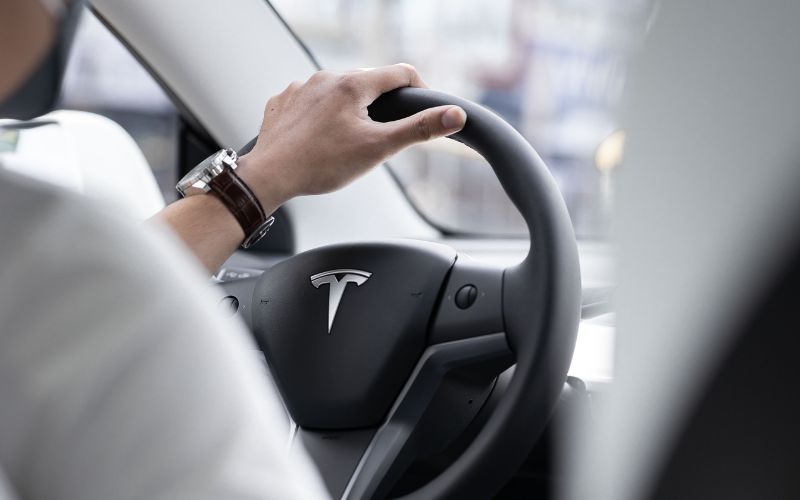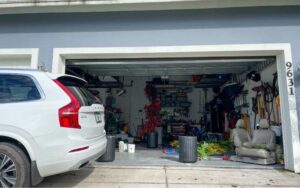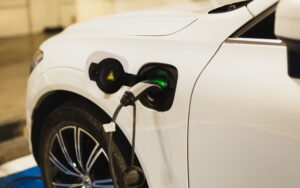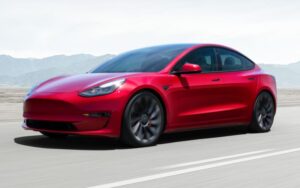Can You Turn Off Tesla Autopilot? (All You Need To Know)
Last updated on April 18th, 2023 at 11:17 pm
Modern Tesla vehicles now exhibit advanced features, one of which is autopilot. This system enhances safety and helps reduce the workload on the driver.
Although, the autopilot feature is easy to use and manipulate. You may not know how it functions, especially if you’re driving such a car for the first time.
However, it is necessary to know how the Tesla autopilot works so you can maximize all of its benefits.
Yes, you can turn off your Tesla autopilot whenever you want. You must override the steering beyond the autopilot threshold or step gently on the car’s brake pedal to turn it off. Tapping the cruise control stalk in the upward direction can also disengage the Tesla autopilot.
In this article, I’ll guide you on a step-by-step journey on how to turn off your Tesla autopilot and when you should consider using this feature.
And at the end, you should be able to tell how the autopilot works and how reliable it can be.
How To Turn Off Tesla Autopilot (Step-by-Step)?

There are three ways to turn off Tesla autopilot when you no longer need its function. You can use any of the following methods;
#1. The Gear Stalk
The gear stalk is the most important thing you need to use the autopilot feature. The direction in which you pull the stalk activates or deactivates the autopilot.
To turn off the Tesla autopilot using the Gear stalk method, you only need to pull the gear stalk in the upward direction once.
The moment you pull the gear stalk, the autopilot will disengage immediately.
#2. Pressing the Brake Pad
Hitting the brake pad of your vehicle can automatically disengage the autopilot and keep you on regular cruise control.
However, you don’t need to press so hard on the brake to make it work. Just a simple touch on the break will do the magic.
#3. The Steering Wheel
When you move your car’s steering wheel while it’s working on autopilot, the autopilot will go off immediately and give you full control of the vehicle.
Although steering the wheel doesn’t turn off the autopilot function, it only deactivates the autosteer. So, the car will still drive for you in terms of speed and other similar functions.
However, using the steering wheel to turn off the autopilot is not recommended for you to use.
The reason is that when you move the steering, it jerks the car and can steer it from one side of the road to the other, which can be dangerous.
However, note that how you turn off your Tesla autopilot largely depends on the model of your car.
Each model has different ways of engaging and disengaging the autopilot. For instance, the new Tesla Model S doesn’t seem to have the cruise control stalk.
You can only deactivate the autopilot in such a vehicle by clicking on the right scroll wheel, which is not among the methods above.
So, the best way to know how to turn off your Tesla autopilot is to consult the owner’s manual of the vehicle.
Carefully follow the manual’s instructions, guidelines, and safety information to handle your vehicle correctly.
When Should You Use Tesla Autopilot?
You should use Tesla autopilot when driving on free long roads, especially if you intend to drive over long distances.
The reason is that autopilot is handy in the most burdensome part of driving to ease stress and discomfort.
However, the Tesla autopilot is not self-driving. As the vehicle’s driver, you are solely responsible for staying alert and fully controlling the vehicle.
Your foot should constantly be on the accelerator to prevent generative breaking.
Tesla also recommends that your hands stay on the wheel even after engaging the autopilot.
The reason is that your hands on the wheel will help supply the torque the autopilot needs to keep moving the vehicle.
So, keep your hands on the steering wheel to avoid regulatory issues. The importance of keeping your hands on the wheel explains why a reminder is in place.
This reminder appears on the monitor for 20-30 secs to put your hands on the wheel, especially when you’re distracted and not applying the necessary pressure required.
Is Tesla Autopilot Reliable?
In terms of safety and convenience, the Tesla autopilot is reliable. It is reliable because of the functions it can carry out.
The Tesla autopilot can work within a set speed limit. It can change lanes, steer around roadworks, and accelerate when necessary.
It can also brake when it detects an obstacle in its way. Not just that, the autopilot can help your vehicle maintain a good distance from other vehicles.
Tesla cars with autopilot also experience fewer accidents. The reason is that the company has researched and understood the various causes of road accidents.
From the result of the research, the company has put in place some safety features and enhancements that can prevent any form of accident.
The table below explains some of these safety features and their functions.
| Features | Functions |
|---|---|
| Automatic Emergency Braking | Brakes when it detects an obstacle in the way of the vehicle. |
| Obstacle-Aware Acceleration | Reduces the car’s acceleration when it detects an obstruction. |
| Blind-spot monitoring | It warns of an approaching car or object when changing lanes. |
| Emergency Lane Departure Avoidance | This keeps your car on track when it drifts off the right lane. |
Other features the Tesla autopilot vehicles exhibit includes;
#1. Traffic-Aware Cruise Control:
This feature helps the vehicle’s speed correspond with the surrounding traffic.
#2. Autosteer:
With the help of the traffic-aware cruise control, it assists the driver on the steering wheel to stay within the right lane.
However, the following factors can reduce the functionality and effectiveness of the autopilot features.
- Poor visibility from bad weather conditions.
- Reduced daylight.
- Interference from objects.
- Excessive paint or adhesive on the vehicle.
- The nature of the road is narrow, winding, high curvature, or damaged.
- Extreme temperatures.
All these features show that the Tesla autopilot system is safe and reliable as long as you stay within its capacity and follow its instructions.
Can Tesla Autopilot Engage Automatically?
Tesla autopilot cannot engage itself automatically; it requires activation. Pull the gear stalk downward twice in quick succession to engage the autopilot.
Pulling down the gear stalk twice will activate the autopilot and the autosteer features. If you pull the gear stalk just once, it will not engage the autopilot.
Rather, it will only activate the adaptive control cruise. So, you must ensure to pull it twice and quickly too.
Once the Tesla autopilot is activated, it automatically accelerates within the pre-set speed and brakes for other vehicles, pedestrians, or anything approaching the car.
It also keeps the car straight, with minimal effort from the driver. However, how effective and accurate your Tesla autopilot functions depends on you.
You must ensure to keep the cameras, sensors, and all other hardware connected to the autopilot free from dirt, obstructions, and anything that can cause damage to it.
The reason is that the Tesla autopilot uses these cameras, sensors, and ultrasound systems to detect objects around them and help you drive safely.
So, you must play your role, and rightly too, to maximize the Tesla autopilot’s benefits.
Conclusion
You can turn off your Tesla autopilot if you do not like how your car is driving or when you choose to have full control of the vehicle.
Stepping on the brake pedal, pulling the gear stalk upwards, or steering the car’s wheel will turn off your Tesla autopilot and give you full control of the vehicle.

Hey, I’m Michael Davis, a 35-year-old with a degree and a love for cars and tech. Since I was a kid, cars have been my thing—so much that I even thought they ran on magic beans! Fast forward, and I’ve built Vehicle Army, your one-stop-shop for easy-to-understand car facts.






